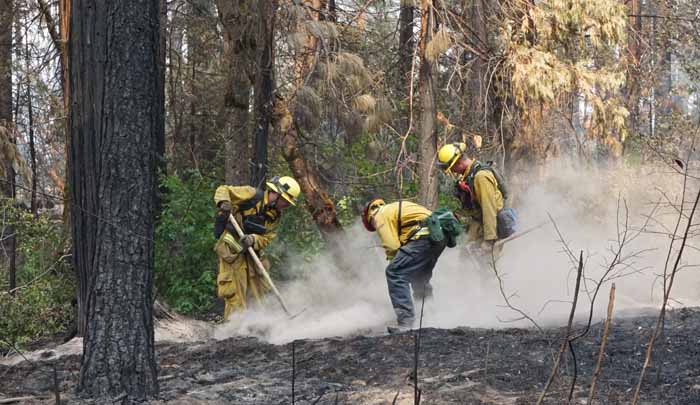Previously we posted some photos we took at the Beaver Fire northwest of Yreka, California, here and here. Below is the last batch.
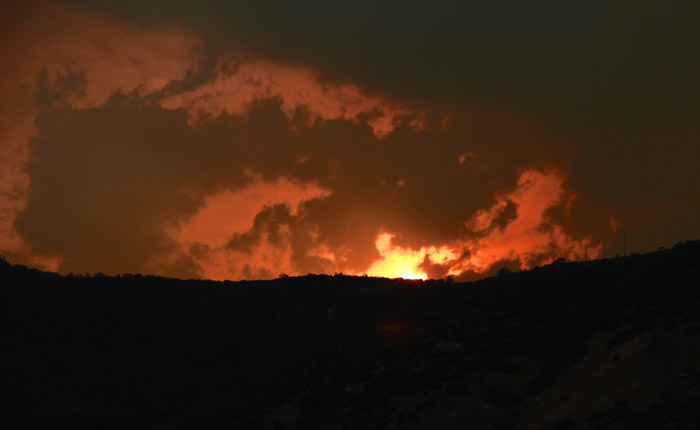
News and opinion about wildland fire
Yesterday we posted some photos that we took at the Beaver Fire, which has burned about 32,000 acres northwest of Yreka, California. Here are some more.

After working for the Six Rivers National Forest for 29 years, Beth Maplesden Strickland is familiar with wildfire. Her last job with the U.S. Forest Service was serving as a public affairs officer, frequently having to explain fire management to reporters and local residents.
Now evacuated from her home on Buckhorn Ridge near Klamath River, California, she is reduced to watching the fire from a turnout on Highway 96. Thanks to the fuel mitigation they accomplished around the house where the family has lived since 1909, firefighters were able to keep the home from burning. However several outbuildings and vehicles were consumed. As we watched the fire, which was still burning in and around the property, occasional black puffs of smoke would appear and loud pops or small explosions could be heard, indicating that man-made materials were on fire. A former CAL FIRE firefighter was still in the area near the house and has been giving her updates over a radio, so she knew that as of Tuesday afternoon, anyway, that the house was still standing.
We asked Ms. Strickland if we could take her picture, but she declined, saying she’s been “sleeping in dumpsters” for the last four days. (We are pretty sure she was joking about that.) It was hard for her to take her eyes off the fire as it continued to burn around her home that she has lived in since four months after she was born in Yreka. Knowing that the landscape around the property is going to be almost unrecognizable now, she said, “I don’t know if I can go back”.
On Tuesday we were at the Beaver Fire northwest of Yreka, California, watching it move down and across slopes above the Klamath River. Below are some photos we took. Over the next two days we will post more.
The Beaver Fire has already reached Highway 96 in several places along a 12 to 14 mile stretch of the road. On Tuesday it was backing, primarily, down the hill in the vicinity of the Klamath River School, and east of the school. Generally it was moving fairly slowly while we were there, with one to three trees succumbing to flames at a time, or torching as firefighters call it.
Firefighters are protecting structures up in the woods away from the road as best they can. Helicopters were assisting ground-based firefighters by dropping water from the river and fire retardant from a portable retardant plant. At Fire Aviation you can see photos of a Sikorsky Air-Crane reloading with retardant. During the three hours we were at the south end of the fire we did not see any air tankers.
The last size estimate from the Incident Management Team was a couple of days ago when it was mapped at about 28,000 acres. Clouds at night have interfered with the ability of the airborne infrared mapping crew to accurately provide a fire perimeter and current acreage. The Team is calling it 30 percent contained.

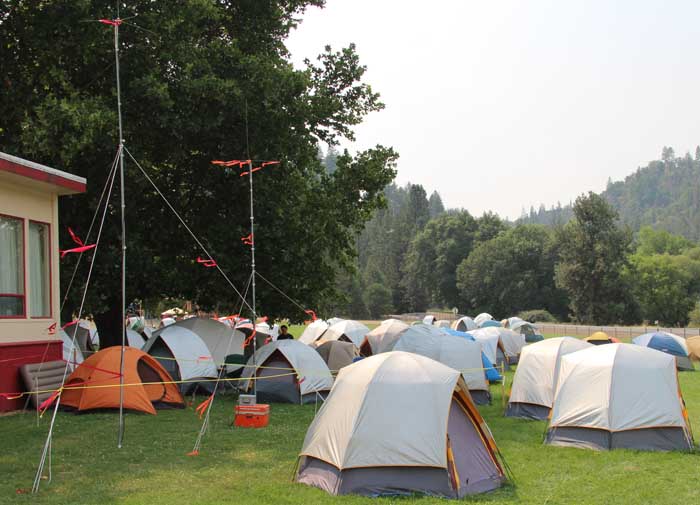


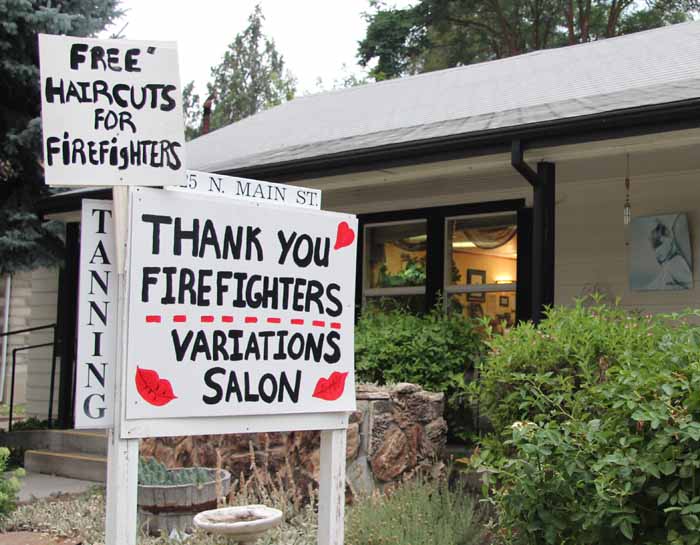
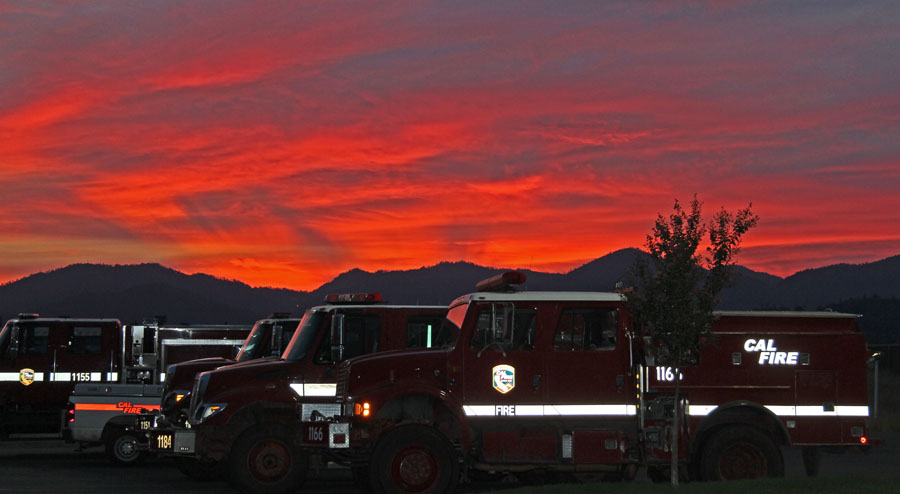
Some of the readers of this site may agree with the supposition that a beautiful sunset can be enhanced if there are fire engines in the foreground. OK… probably not MANY will agree — but maybe there’s one or two that will. Or, at least ONE. Right? Help me out here!
This was a strike team of CAL FIRE engines that is assigned to the Eiler Fire 40 air miles east of Redding, California. They are working 24-hour shifts and every other day come in to Redding to stay in a motel, where this photo was taken tonight, August 10.

Yesterday we had the privilege to meet David Shepard, the owner of a house deep in the woods in northern California. His log house with a metal roof survived an onslaught from the 31,000-acre Eiler Fire about 40 air miles east of Redding, California without a scratch. Even his stacks of firewood on the porch and in the yard are completely intact. The fire burned completely around his place, right up to the structure on one side. Helpfully for when a fire burns through the property, the house is flanked on two sides by a creek that forks just upstream from the structure.
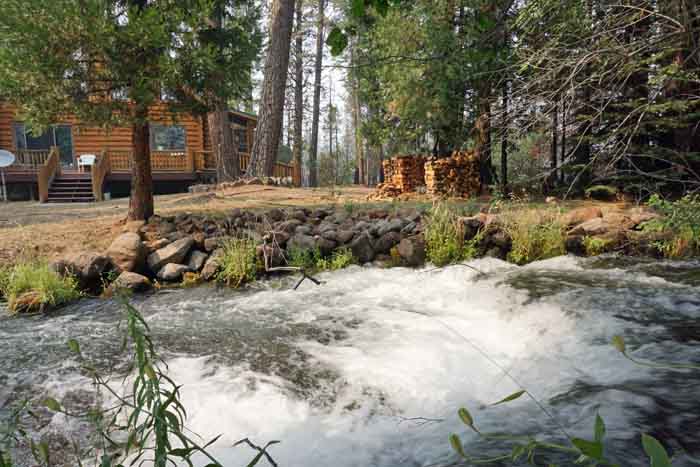
When we asked Mr. Shepard if he was at the house during the fire, he said, “Do you think I’m crazy?”
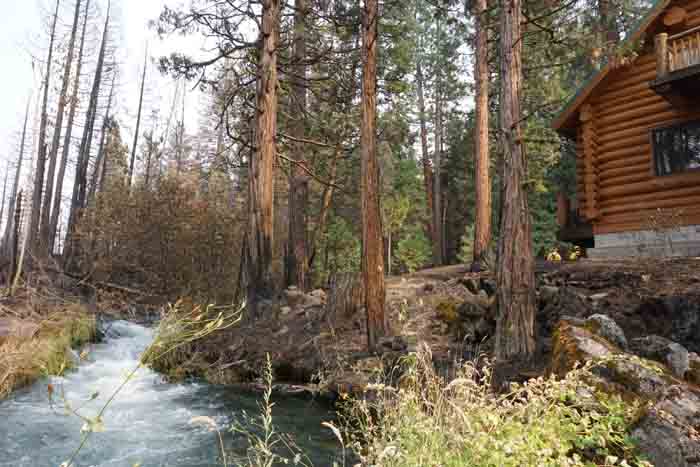
As you can see in the photo above, just across the creek multiple tree torched, indicating that it was burning intensely just 75 feet away from the house. We saw no indication of any retardant drops from air tankers, probably because they were not allowed to place retardant near the streams.
Mr. Shepard, who prefers not to have his picture taken, is a film preservationist — he restores film. We asked if he worked with old nitrate base films which are extremely flammable and can even spontaneously combust if stored at a high temperature in an area where the heat can’t dissipate. He said he has some in the house but they are stored in metal containers.
We later Googled Mr. Shepard and discovered that the modest man produces movies and is an award-winning film preservationist, receiving, among others, the Lifetime Achievement Award from the Denver Silent Film Festival.
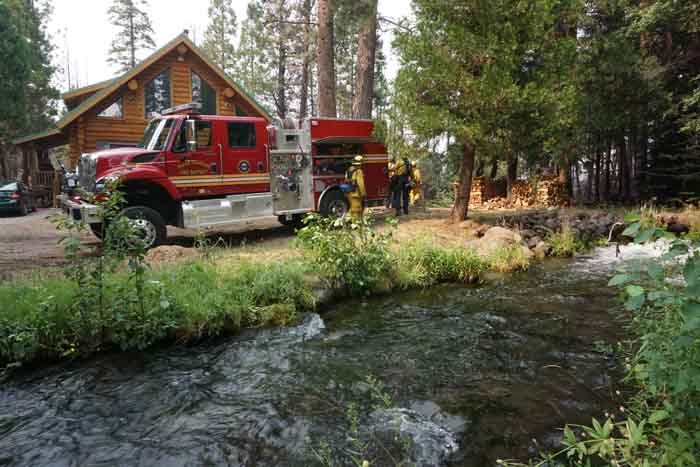
While we were at the house an engine crew from the Tahoe Douglas Fire District arrived to do some additional mopup. Much of the area had already been heavily mopped up, to the point of becoming muddy, probably by using water drafted out of the creek. But there had not been much done on the other side of the creek, and a few smokes created some concern for Mr. Shepard, who had called and requested some additional work from the firefighters.
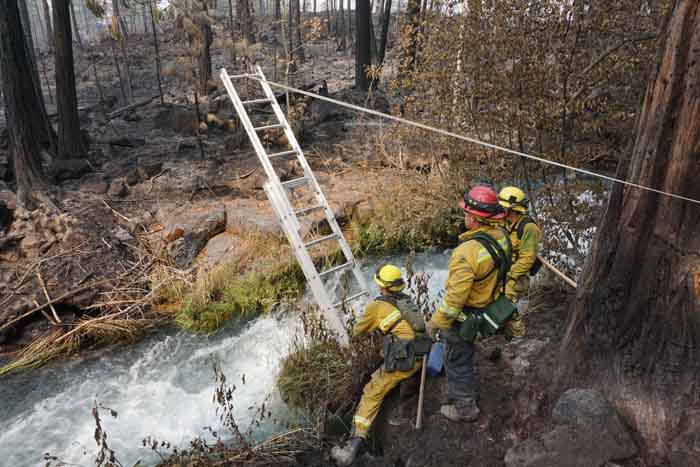
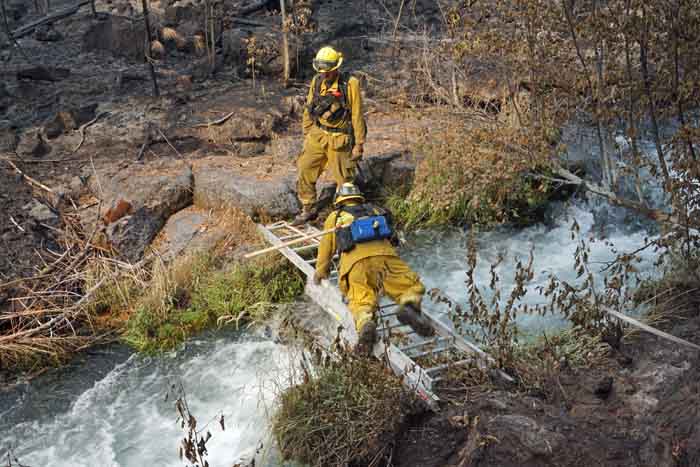
One reason the area across the creek had not received much attention was that there was no easy way to cross the six to ten-foot wide water course. Captain Chris Lucas and his crew of Jessie Rowan, Ben Pratt and Shean Bailey solved that problem by taking a ladder off the engine and using it as a bridge. After extending it vertically, they lowered it across the water by using “baby hose” as a rope. The firefighters then got on all fours and crossed on the ladder.
